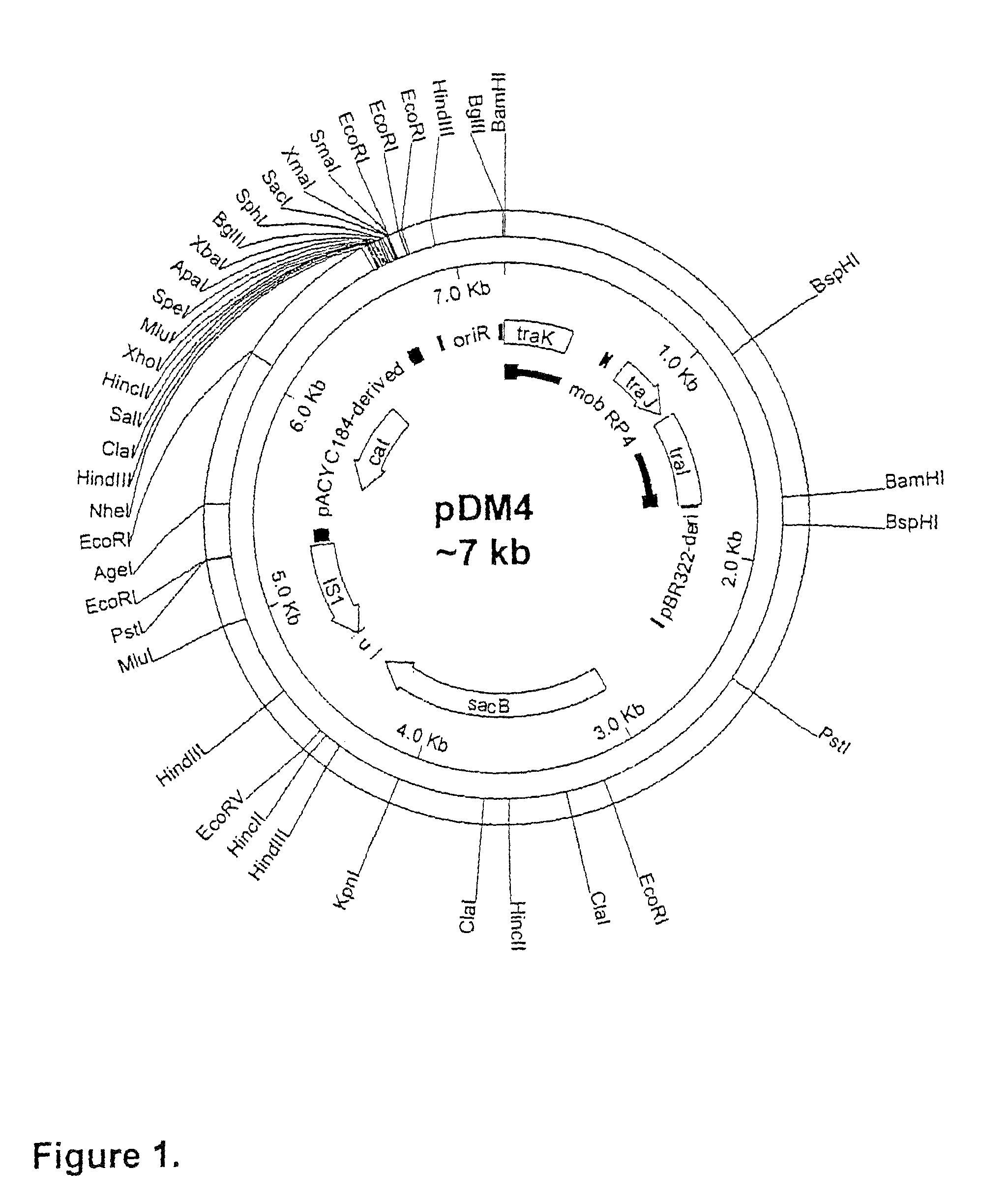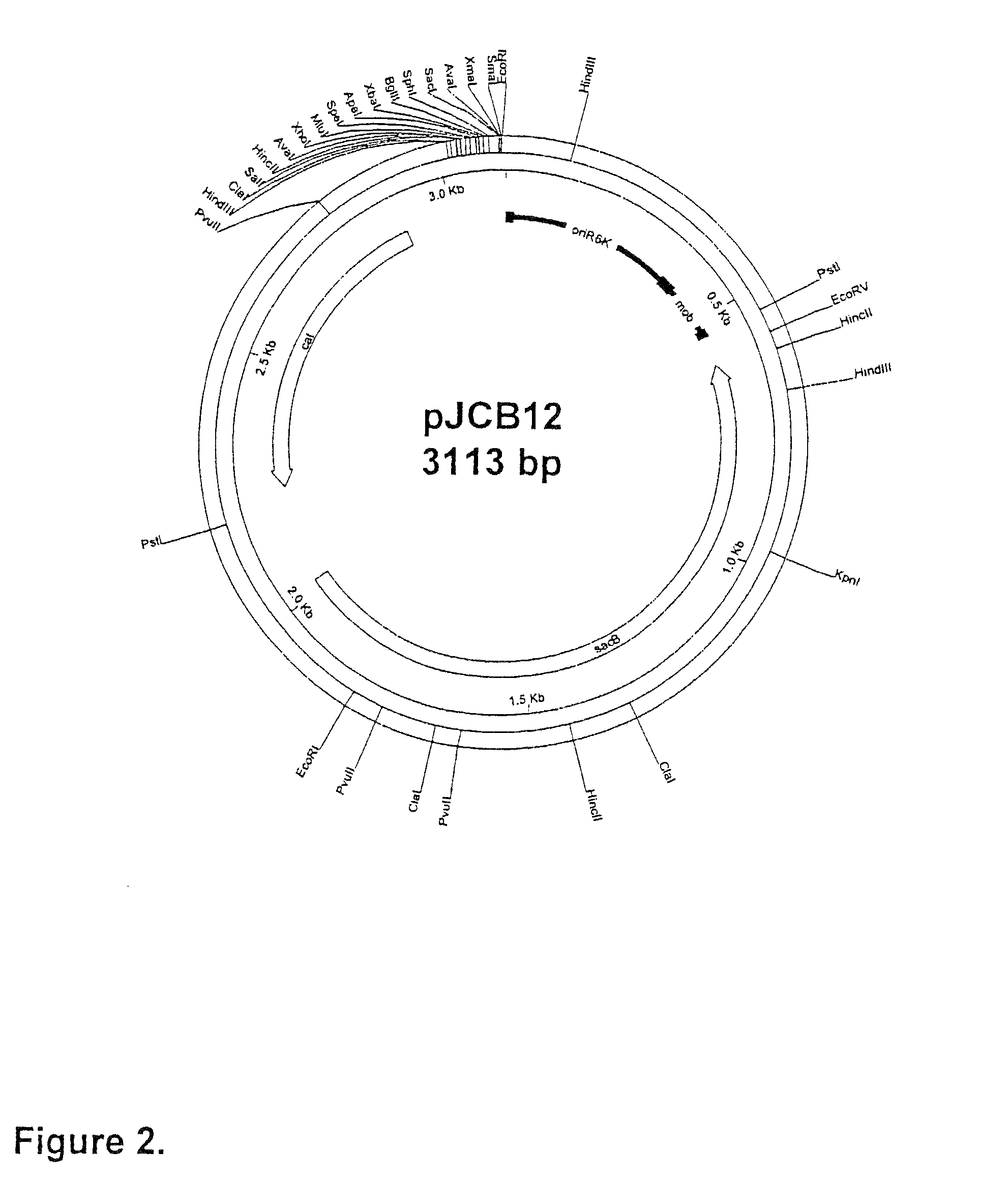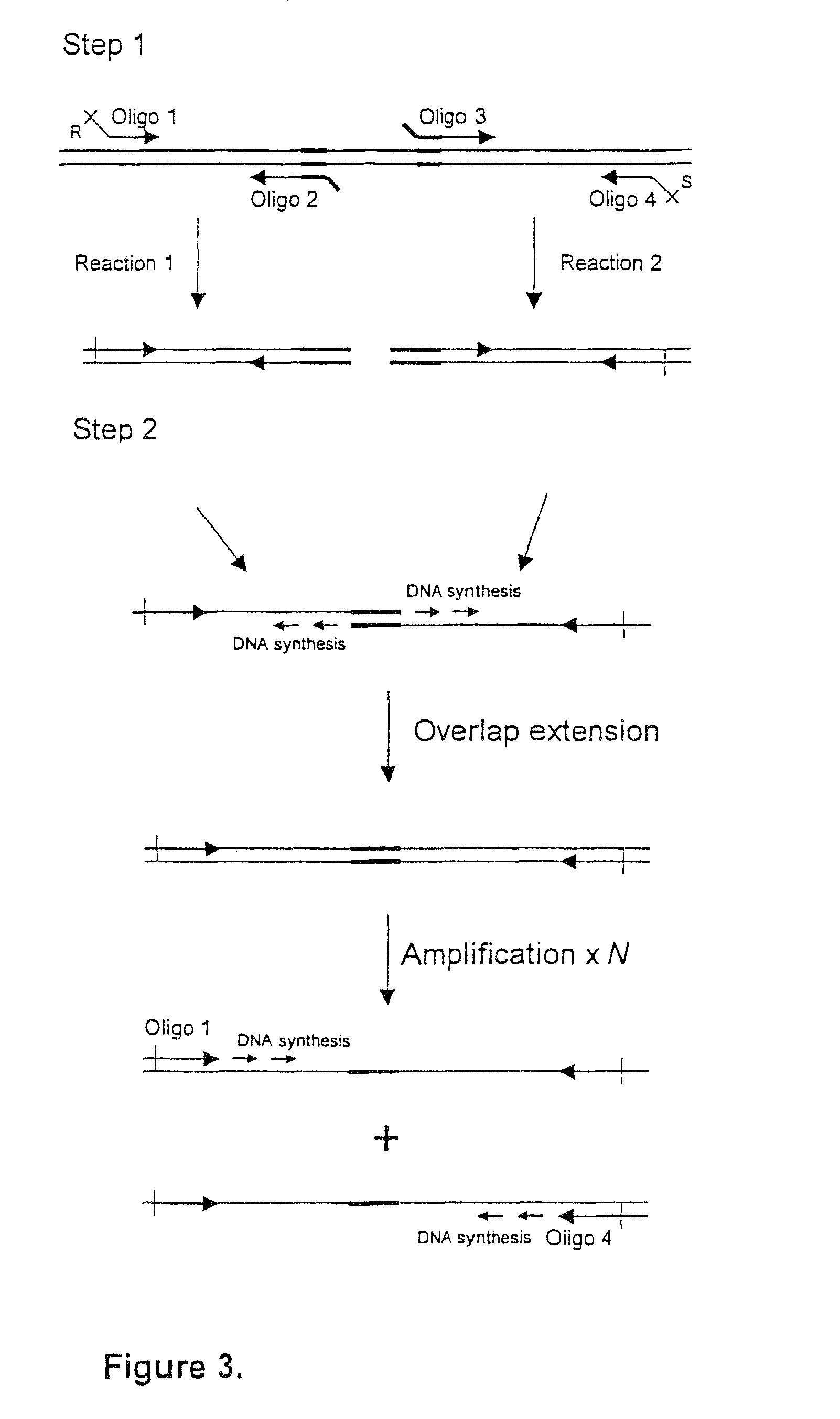Attenuated bacteria useful in vaccines
a technology of attenuated bacteria and vaccines, applied in the field of attenuated bacteria useful in vaccines, can solve the problems of particular difficulties, no explanation in the chatfield of how such strains might be generated, etc., and achieve the effect of reliable and rapid cell isolation and specific and more reliable targeting
- Summary
- Abstract
- Description
- Claims
- Application Information
AI Technical Summary
Benefits of technology
Problems solved by technology
Method used
Image
Examples
example 1
An Improved Process for the Introduction of Multiple Gentic Mutations into Bacterial Vaccine Strains
[0082]This section describes the generation of a novel suicide vector plasmid, pJCB12, and its use in the generation of an optimised procedure for the introduction of mutations into chromosomal or plasmid encoded gene loci. It also describes many of the standard methods used in this and subsequent examples of the specification, at the end of the section. The sequence and purpose of the oligonucleotides used in PCR for construction or analysis of constructs are given in Table 1 at the end of the Examples.
An Improved Process for the Introduction of Multiple Genetic Mutations into Bacterial Vaccine Strains
[0083]The generation of an attenuated ETEC strain from a wild-type strain requires mutation of a number of different genetic loci. These mutations are introduced sequentially, each using a process that requires several different steps. When a number of ETEC strains require attenuation, ...
example 2
Removal of Toxin Genes and Introduction of Attenuating Mutations into Strains Expressing CFA / I
Manipulation of Strain A to Produce Strain ACAM 2010
[0127]Strain A (WS-1858B) expresses the colonisation factor antigen CFA / I and the heat-stable toxin ST. In order to generate an ST-negative derivative that continues to express the CFA / I colonisation factors the strain was first transformed with a plasmid conferring tetracycline resistance. This was to allow subsequent selection of the strain from conjugation mixtures. The plasmid conferring tetracycline resistance is a derivative of plasmid pACYC184 (40) in which the chloramphenicol resistance determinant had been inactivated by deletion of a BsmBI restriction enzyme fragment using standard DNA manipulation procedures. This plasmid was termed “pACYC-Tc” and was introduced into strain A by electro-transformation.
[0128]The TetR derivative of Strain A was conjugated with SM10λpir harbouring plasmid pJCB12-STI. This pJCB12 derivative contains...
example 3
A Derivative of a Virulent Wild-Type ETEC Strain which Expresses CS5, CS6, LT, ST and EAST1 wherein the LT, ST and EAST1 Genes Have Been Deleted
[0148]Strain E expresses CS5, CS6 and the toxins EAST1, ST and LT. In order to facilitate genetic manipulation plasmid pACYC-Tc (described in Example 2 above) was introduced into strain E by electro-transformation in order to confer tetracycline resistance.
[0149]The EAST1 toxin gene was deleted from Strain E first. This required the construction of a pJCB12 derivative which carries a defined EAST1 deletion mutation. Such a deletion mutation was generated by amplifying EAST1 fragments from the ETEC strain H10407, using oligonucleotides 4749 with 4750, and 4751 with 4752, to generate two DNA fragments flanking the EAST1 gene. FIG. 6 shows the sequence of the EAST1 locus derived from IS1414 (Genbank accession number AF143819) and all oligonucleotides used. These were then fused by an additional overlap extension PCR reaction using primers 4749 ...
PUM
| Property | Measurement | Unit |
|---|---|---|
| concentration | aaaaa | aaaaa |
| concentration | aaaaa | aaaaa |
| concentration | aaaaa | aaaaa |
Abstract
Description
Claims
Application Information
 Login to View More
Login to View More - R&D
- Intellectual Property
- Life Sciences
- Materials
- Tech Scout
- Unparalleled Data Quality
- Higher Quality Content
- 60% Fewer Hallucinations
Browse by: Latest US Patents, China's latest patents, Technical Efficacy Thesaurus, Application Domain, Technology Topic, Popular Technical Reports.
© 2025 PatSnap. All rights reserved.Legal|Privacy policy|Modern Slavery Act Transparency Statement|Sitemap|About US| Contact US: help@patsnap.com



